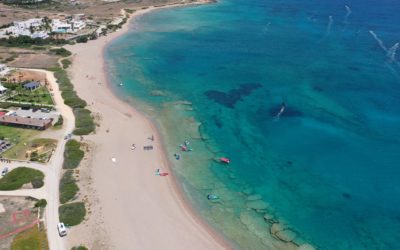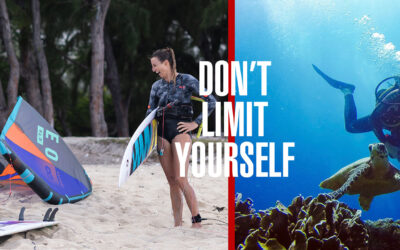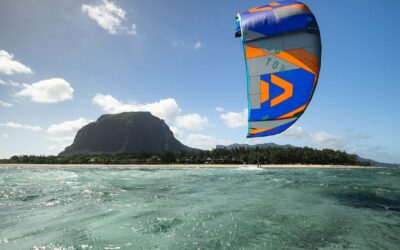What is kitesurfing, and how does it differ from other watersports?
At the end of the 70´s French waterman and adventurer Arnaud de Rosnay invented the parafoil, a kind of kite that pulled him along while he was seated on a very large board. This revolution in the world of sailing would inspire others… but it would be many years before kitesurfing became a mainstream sport. At the end of the 90´s this new sport gained in popularity and spread rapidly as far as Hawaii, thanks in particular to surfing and windsurfing professionals, such as Laird Hamilton and Emmanuel Bertin, who tested kites developed by the Legaignoux brothers from Brittany. In 1998, Frenchman Raphaël Salles, inspired by all of this know-how, further developed kitesurfing. He reduced the surface area of the board and invented the kitesurf board. Thanks to the research carried out by all of the surfing professionals, a new nautical activity was born, and kitesurfing began appearing on more and more beaches in the early 2000´s. Nothing could be simpler than an inflatable kite measuring several square meters, connected by long and strong lines to a bar, and a board underfoot for riding on!
Many of us were very wary of kitesurfing in the early years, as windsurfing was at its peak! However, most newcomers to the world of windsurfing now try their hand at the magic of kitesurfing, which is easier and faster to learn than windsurfing, but more dangerous as soon as the wind increases. Over the years, many windsurfers will tell you that it is not the same sport, kiting being less physical than windsurfing, which is more in interaction with the water’s surface.
Kitesurfing certainly requires space, both on land and on the water, and you often need help to launch, unlike wingfoiling and windsurfing which are more independent activities. However, kitesurfing can be enjoyed in all weathers and at speeds of less than 10 knots, thanks to the birth of kite foils and wings.
How to choose your first kitesurfing equipment?
The choice of kitesurfing equipment is very important for getting started and progressing. Choose a long and wide twintip board, i.e. a rectangular shape with a similar front and back, and 2 symmetrical fins on each side (4 in all) under the board.
The surface area and shape of the kite are also crucial. When you are just starting out opt for a kite that matches your weight and size, generally between 8 and 12m², so that you can ride at 15-20 knots on your first runs. For the shape, opt for a delta-type wing, which is less powerful, more stable, and easier to launch than C-shape wings.
Of course, you will need a bar and lines, not forgetting a waist harness, neoprene wetsuit, booties, flotation jacket and helmet.
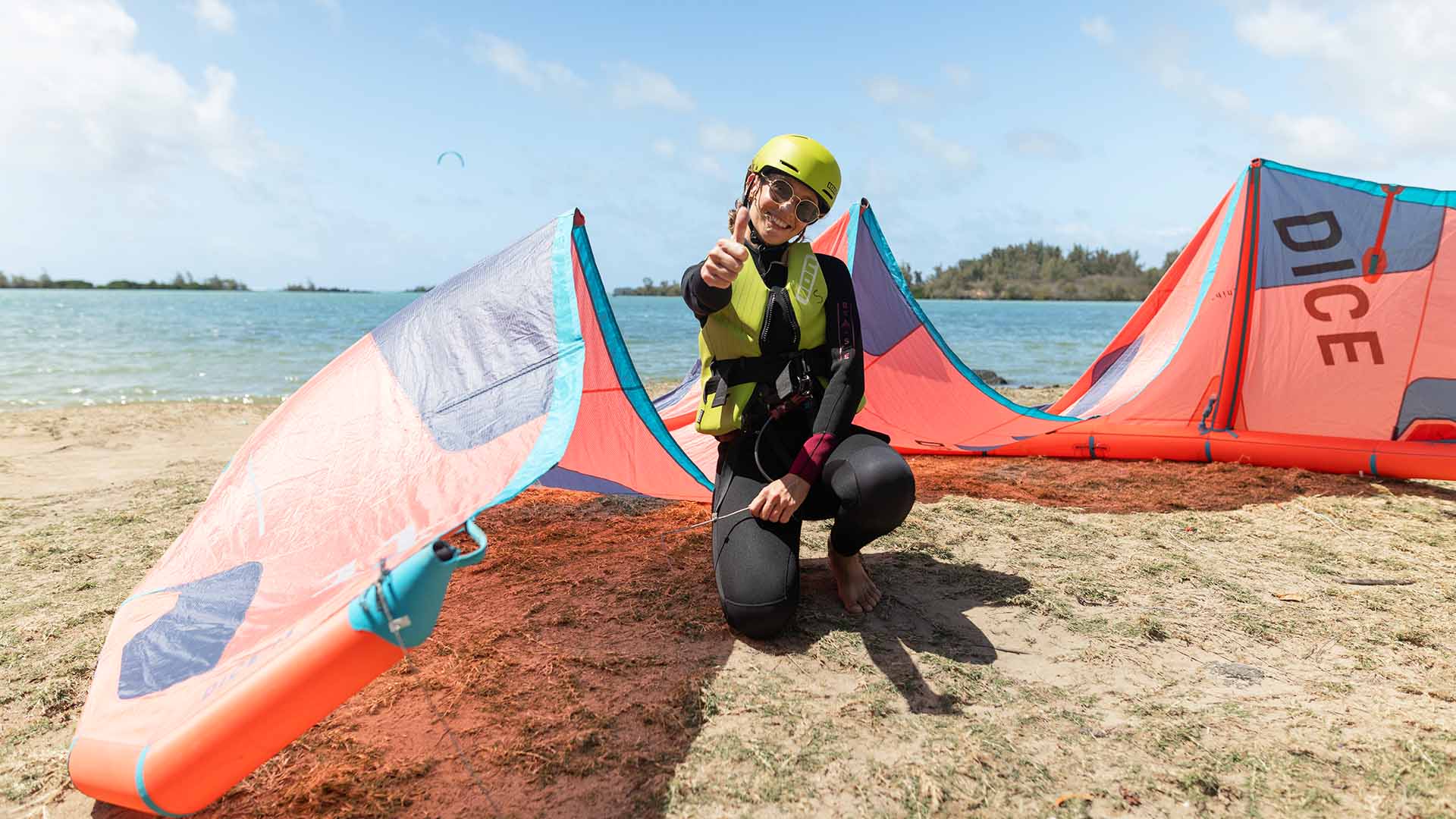
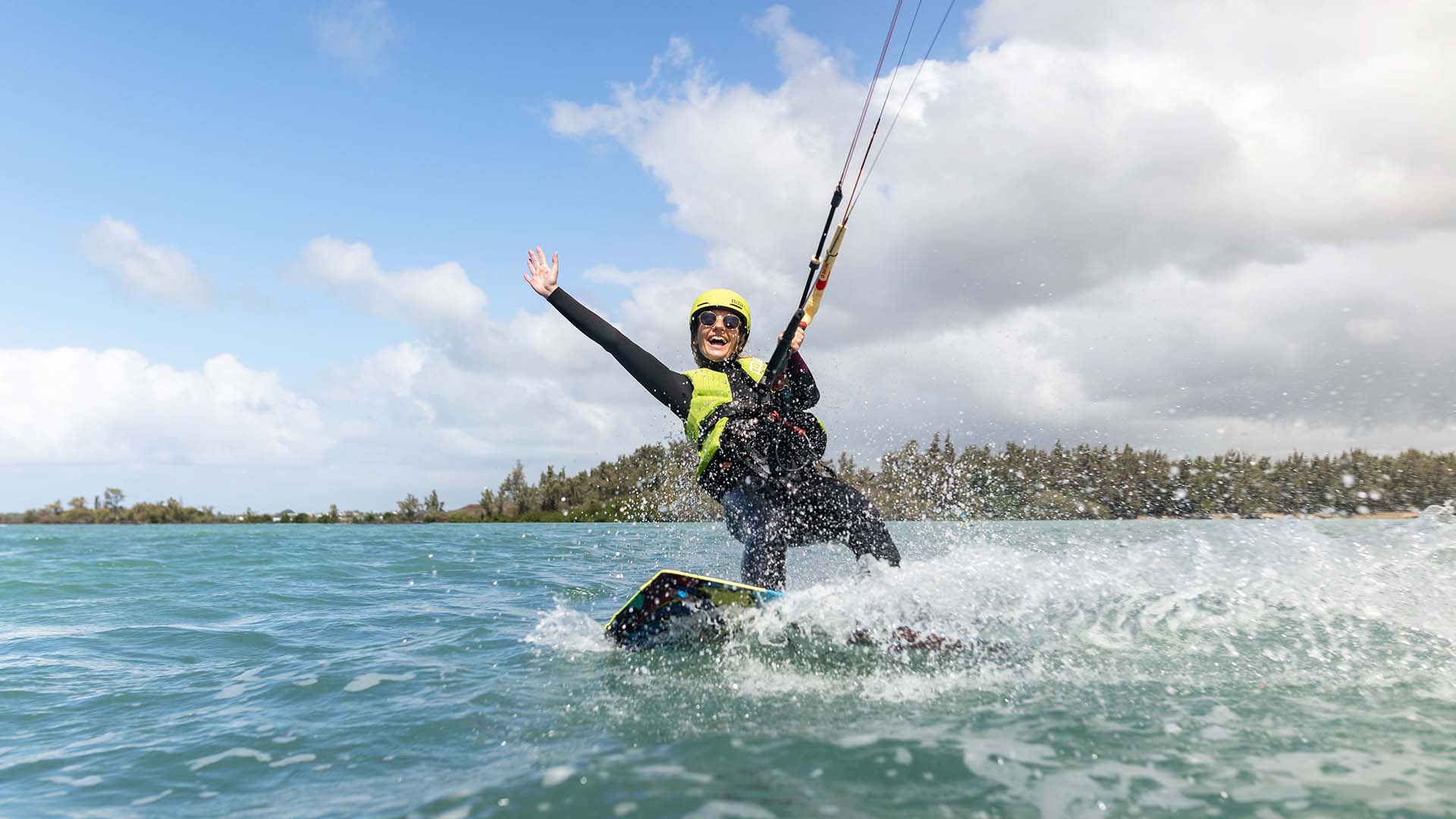
Where are the best places to start kitesurfing safely?
Opt for a large sandy beach which is away from rocks and other obstacles when learning to kitesurf. Ask about currents too, especially if the wind is light and likely to drop gradually during the day. If the water is flat or with a slight chop, it will be less difficult if you are just starting out. Our ION CLUB centers in Lassarga, Dakhla White Dune, Essaouira, Fuerteventura, Sal, Golf de Roses, Tarifa or Cabarete, Safaga or Mauritius, are waiting for you.
During the summer, many beaches set up kitesurfing zones, so try to respect them!
How long does it usually take to learn the basics of kitesurfing?
Being independent in kitesurfing (going upwind without a problem without dropping your kite) can be quick for some riders, and much slower for others. Listening to your kite instructor’s advice, not jumping the gun or overestimating yourself are great tips for progressing in the right direction. Progress will be gradual if you listen to the advice of experienced kitesurfers, observe the water without neglecting the environment, and kite (fairly) regularly.
The most gifted and athletic can expect to become more or less independent with 12 hours of kitesurfing with an instructor, in private or semi-private lessons. Beware: To be independent after a few hours of training does not mean that you are an experienced kitesurfer. As for those who are slower to progress, expect to spend around 20 hours, sometimes more, to finally experience the pleasures of kitesurfing! You will need to know how to launch, ride upwind and then return to the starting point without dropping your kite (too often), whilst complying with safety rules, and of course without endangering yourself or others.
Today kitesurfing has become a sport which is accessible to a wide public, as long as you go through a kitesurfing school or are supervised by an experienced friend.
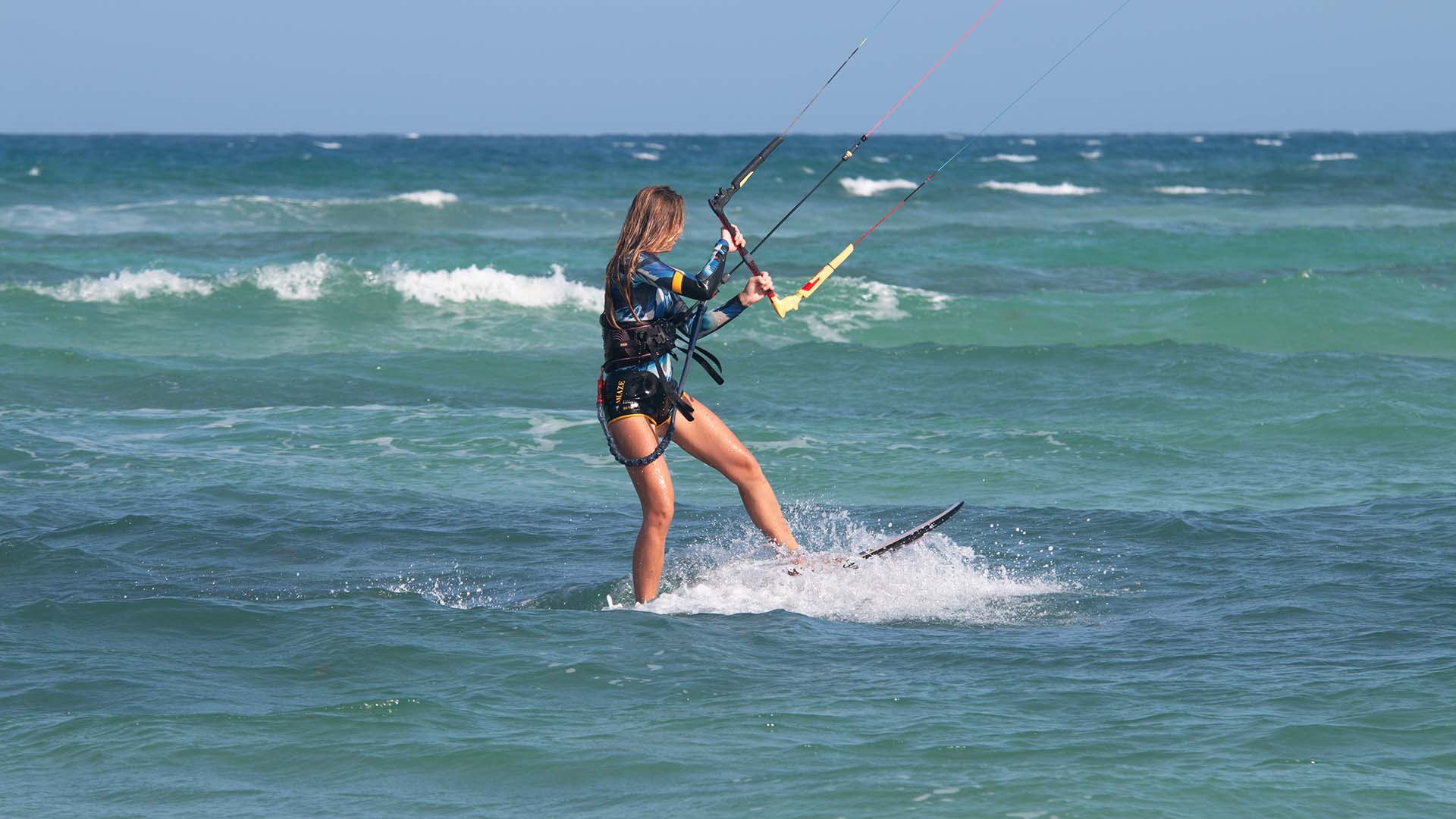
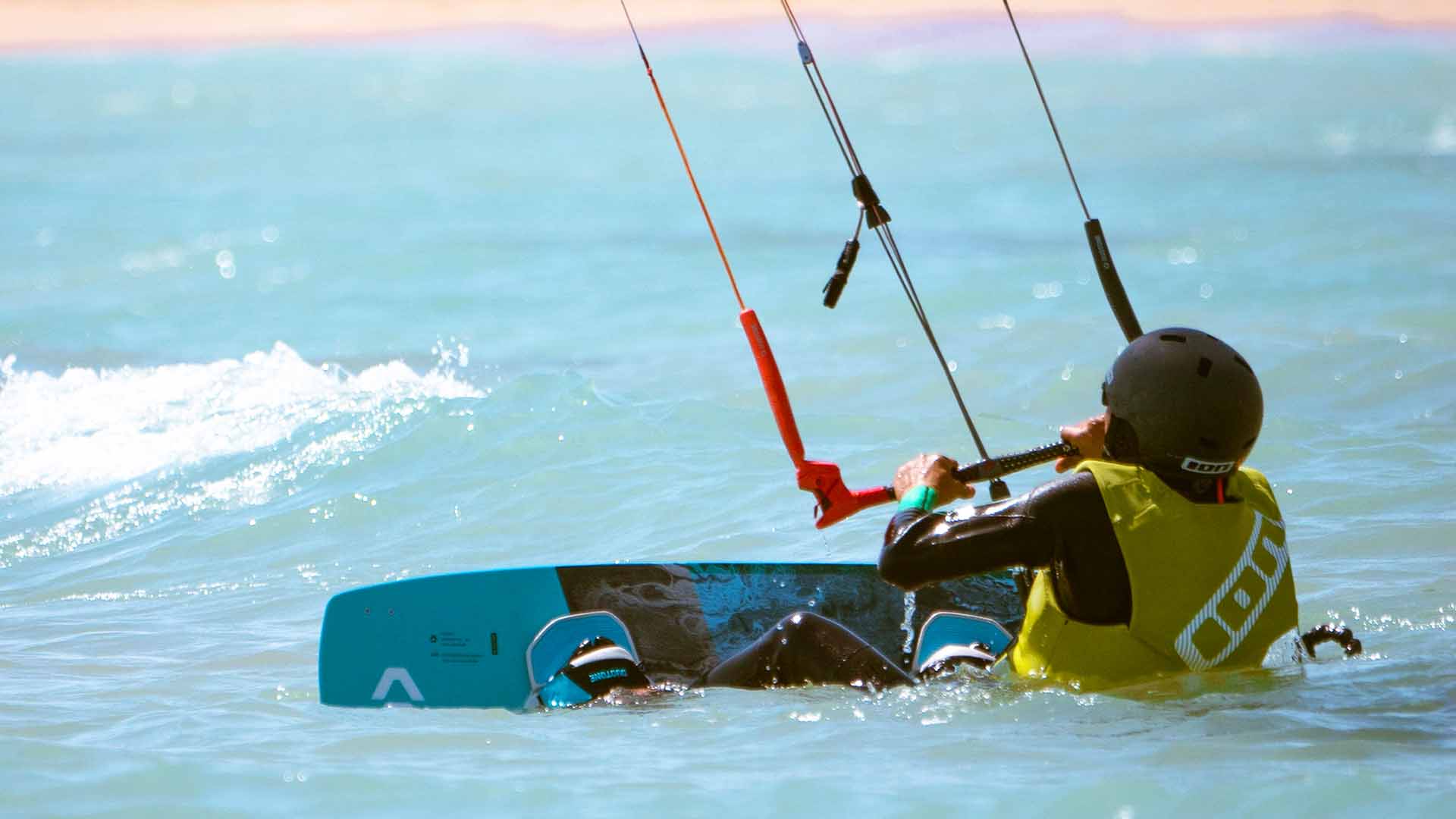
What are the most common mistakes made by kitesurfing beginners?
The most common kitesurfing mistake made by beginners is to misjudge the strength and direction of the wind, which is essential to get the kite in the air, and to control it well without scaring yourself (and others!) That is why it is so important to know how to manoeuvre and to steer your kite before going out on the water, first without the board (body dragging), and then with the board for your first tacks.
Sheeting out (releasing the kite by means of the bar) and sheeting in (pulling on the bar) are the two basic actions used in kitesurfing to release and increase power in the kite.
Avoid going too far out to sea, especially if you have not mastered upwind riding, as it is almost certain that you will not come back to the starting point, having drifted in your early stages.
Pay close attention to all of the advice that you are given on kitesurfing, and do not put yourself at risk. Above all, kitesurfing must remain a pure pleasure in relation to the elements that nature provides!
How do you ensure your safety when kitesurfing for the first time?
Kitesurfing requires a great deal of vigilance, especially when you are just starting out.
Always tell a relative, a friend or another kitesurfer at the spot when you are going out, and let them know more or less how long you will be out and where you are riding – you never know what might happen.
Another safety rule for kitesurfing is to study the weather forecast and the type of spot (on land and on the water) where you want to kite, bearing in mind that wind strength and direction can change over the course of the day.
Choose the right equipment, adapted to your level, to your weight and to the current weather conditions. This is extremely important in order to avoid any unpleasant surprises once the bar is in your hands and the kite is ready to take off.
Finally, make sure that no one is too close to you on the beach, and that there are no hazards nearby (trees, poles, fences, rocks, etc.).
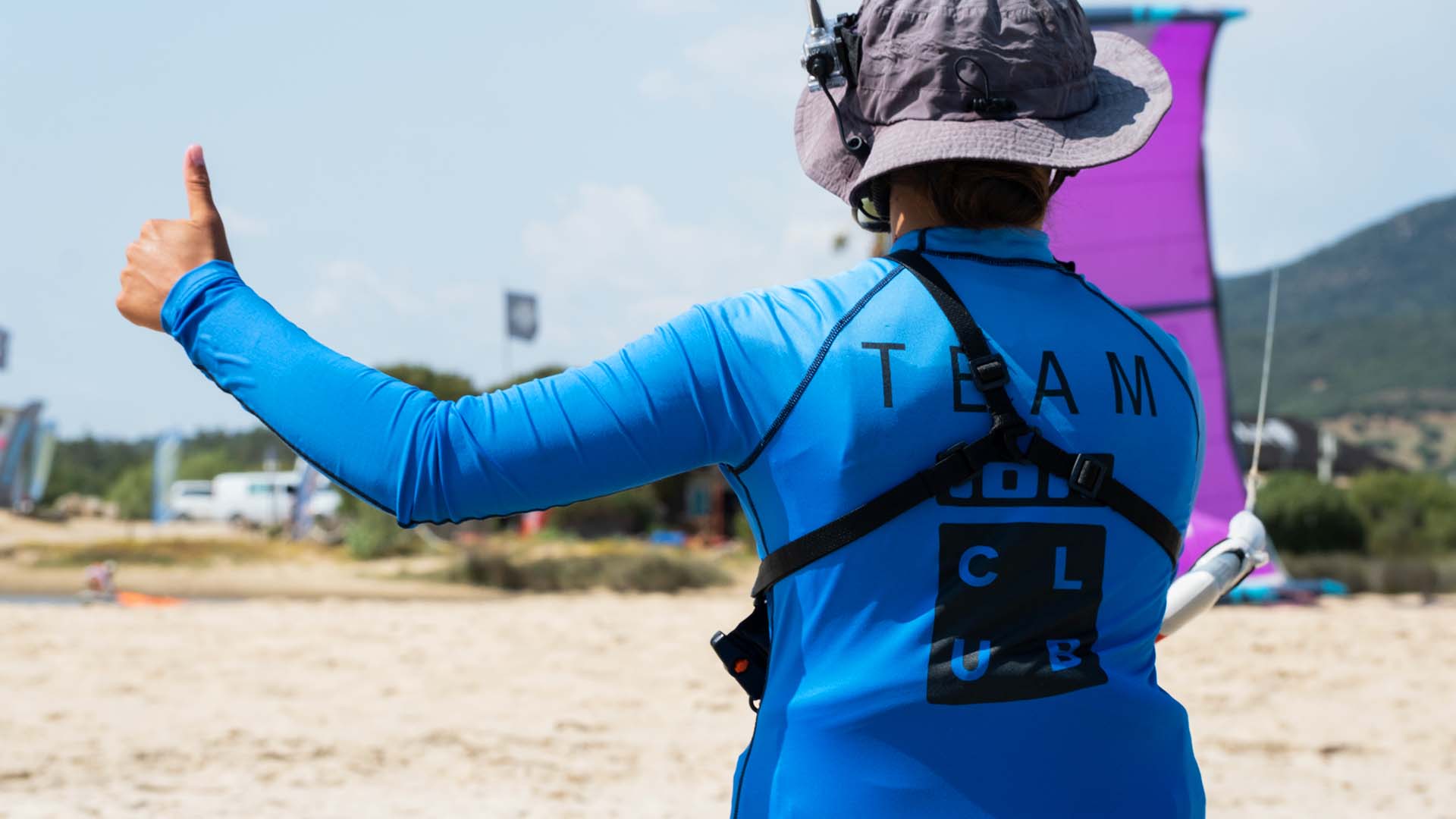
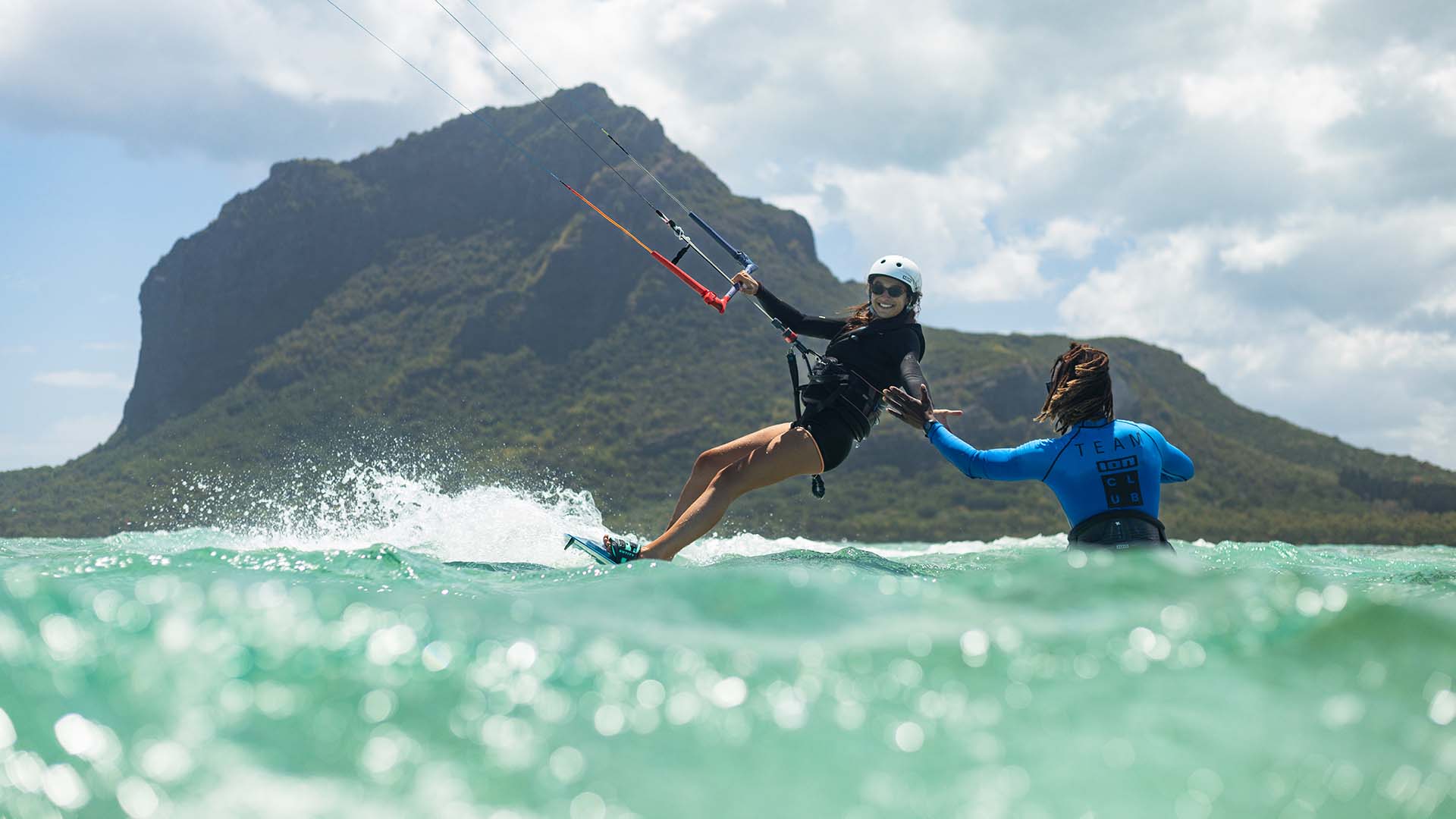
Kitesurfing: How much does it cost to get started?
Kitesurfing requires a certain financial investment, especially when you are a complete beginner and your quiver (equipment) is brand new! That is why before embarking on this adventure, taking a few lessons will help you to decide whether or not you want to continue kiting. In addition to a board, kite, bar and lines, you will also need a wetsuit, neoprene booties, helmet and impact vest if you are a complete beginner in water sports. Fortunately, many surf shops offer complete kitesurfing packages in their shop windows, so you can get started at a reduced cost rather than buying item by item. Since kitesurfing has been around for over 20 years now, there is a second-hand market, so an idea is to start out with equipment that has already been used a little, thus reducing your budget. Remember to check that second-hand equipment has not been damaged before use.
The overall budget for beginner kitesurfing equipment (board+kite+bar and lines) is around 1500€ for a complete new package, and prices can go up to around 2500€. Note that it will soon be necessary for you to have two kites in your quiver, depending on wind strength, to ensure that you can ride more often.
As for the accessories that complete your kiting equipment, choose a good neoprene wetsuit (depending on the temperature of the water in which you will be kiting) with a helmet and a vest, which adds up to around €500 in order to ensure you are comfortable and safe during your next sessions.
Is it necessary to take kitesurfing lessons to get started?
Learning to kitesurf involves progressive steps, and some prefer to learn with friends while others prefer a kitesurfing school with professional instructors.
Kitesurfing is all about respecting yourself and others, and adapting good behaviour on the beach and in the water. The advantage of taking kitesurfing lessons with a qualified instructor is that he or she can teach you the rules of priority and safety, since this is part of your training. Moreover, ION CLUB centers offer various packages on the best kitesurfing spots on the planet, while taking the utmost professional care of their students. Your training center will teach you kitesurfing techniques at your own pace, without rushing you. Depending on the weather conditions and your physical condition, the instructor will adapt the equipment to enable you to progress with complete confidence.
Accidents can happen at any time, whether you are on the beach or on the water, especially if you do not know your equipment and/or underestimate nature. That is why taking a kitesurfing course at a recognized kitesurfing school is your insurance policy for becoming a competent kitesurfer!
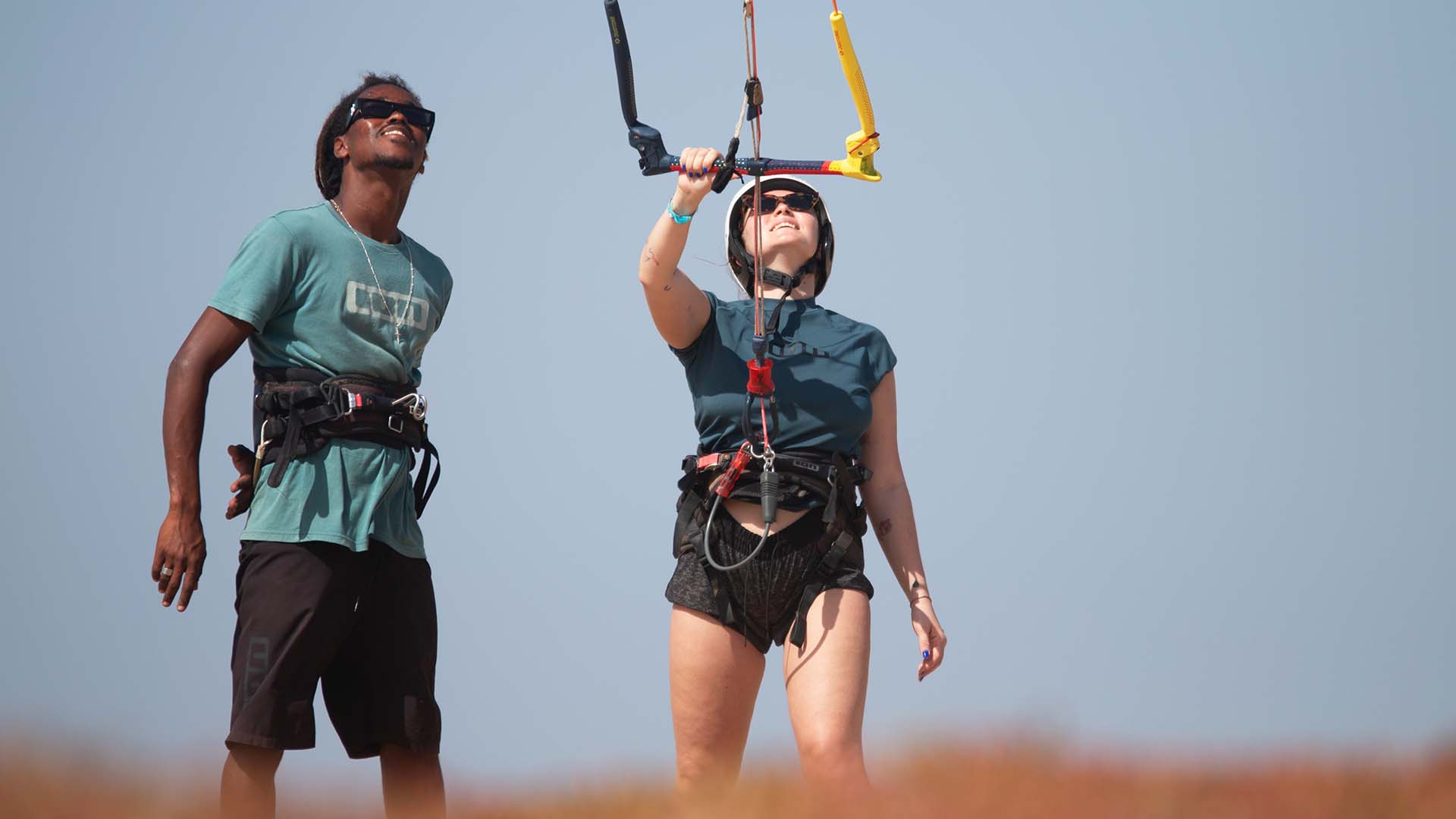
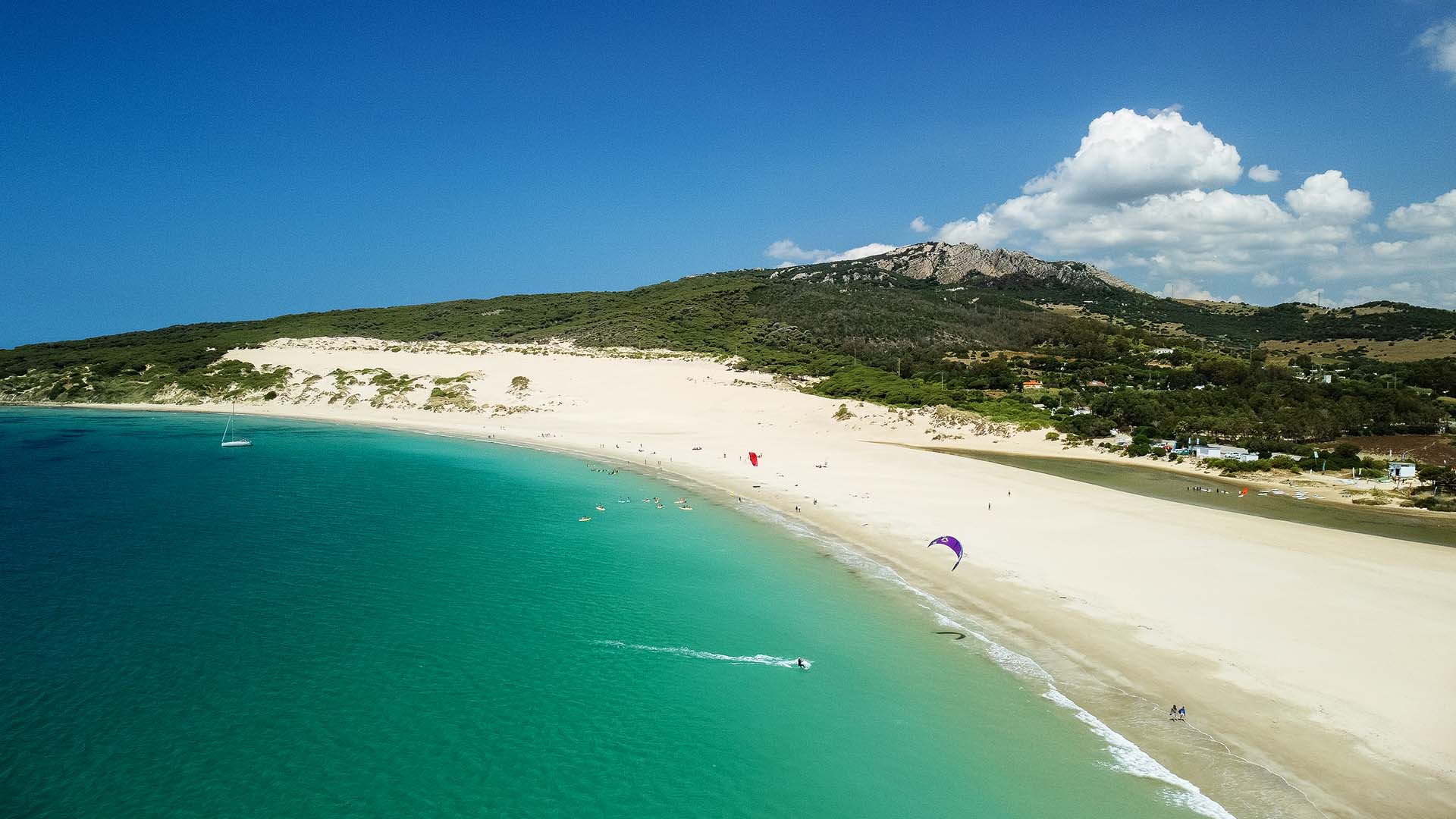
How do you forecast weather and wind conditions for kitesurfing?
Nowadays it is easier than ever to find out what the weather is going to be like, with so many apps and websites out there! Some of them charge a fee to get more intricate details, including live wind strength and direction, and sometimes with a webcam that gives you a picture of the chosen spot down to the second. The best-known are Winds up, Windguru, Windy and Windfinder.
However, just because there is not much wind at the time you are checking the forecast, or analysing it via a live site, it does not mean that it will not pick up an hour later. You can also find the weather conditions on every page of our ION CLUB centers on the website.
Ideally, a wind strength of around 15 knots will be perfect for learning to kitesurf. Always take into consideration the wind direction, which is a very important consideration. Sideshore (perpendicular to the beach from which you are launching), or side-onshore are the most favourable, so that you can be more sure of getting back to the beach. Never try to kitesurf in an offshore wind when you are just starting out – you will never make it back to land without a rescue!
KARPATHOS PACKAGES
FROM SEPTEMBER 28TH TO OCTOBER 13TH 2024 ENJOY EXCLUSIVE ION CLUB PACKAGES HOTEL + SPORT + TRANSFERS Our exclusive 7- day packages offer you much more than just a stay. Immerse yourself in the experience of windsurfing or wingfoiling under the sun and on the...
SCUBA CARIBE x ION CLUB
Diving and Surfing: A Natural Collaboration for Ocean EnthusiastsWhen one thinks of the ocean, two activities immediately come to mind: diving and surfing. These two distinct passions, while different, are remarkably complementary. In Mauritius, two institutions, ION...
Kitesurfing in Mauritius: Essential info !
Mauritius, located in the Indian Ocean to the east of Madagascar, is a real treasure trove for kitesurfers. This tropical, volcanic island is not only popular with tourists in search of paradise beaches, hikers and divers, but also with kitesurfers from all over the...

